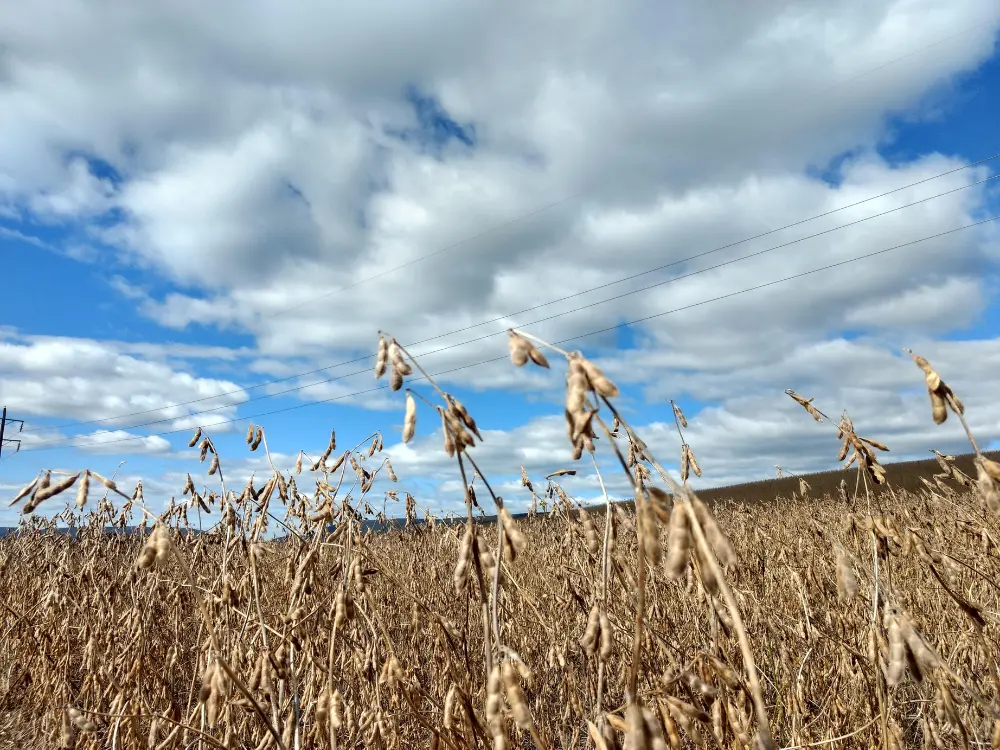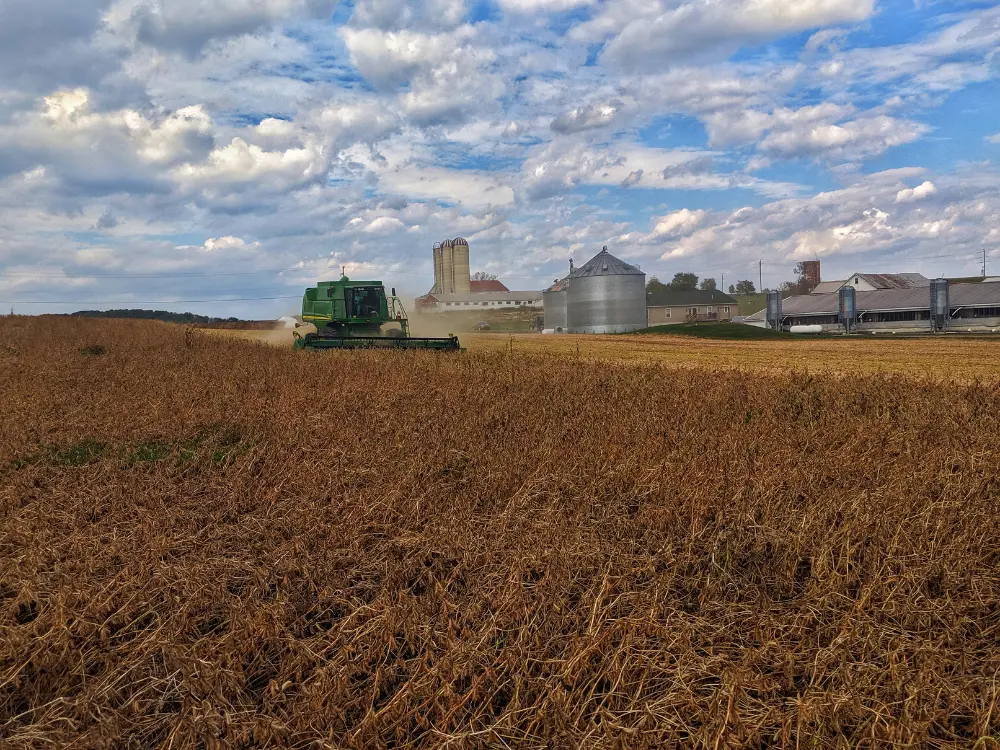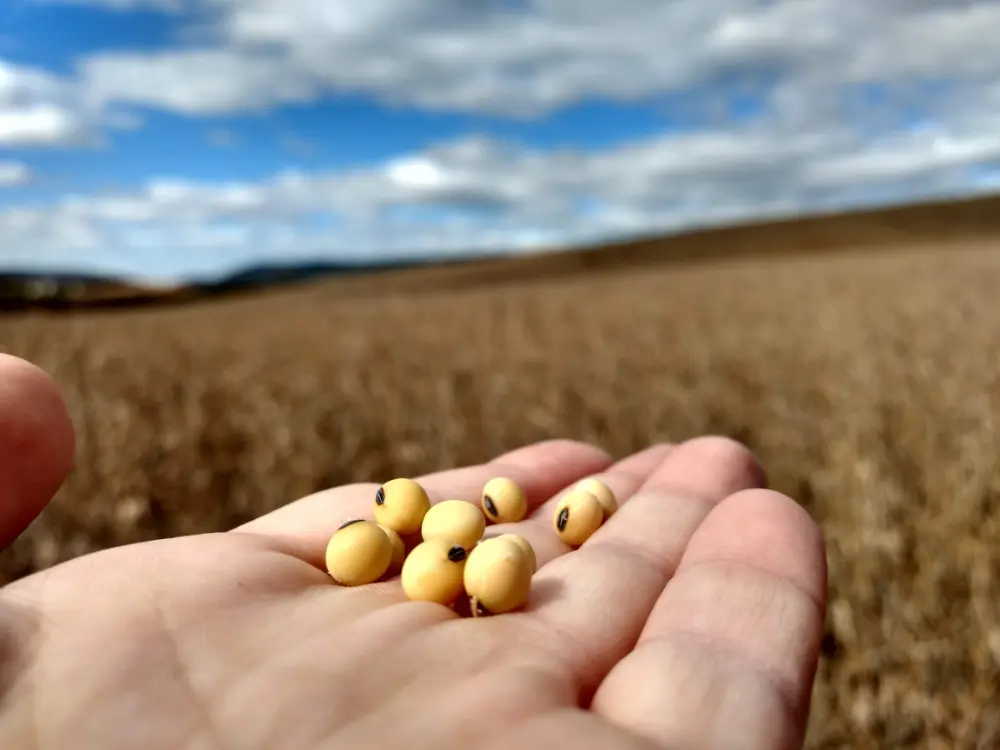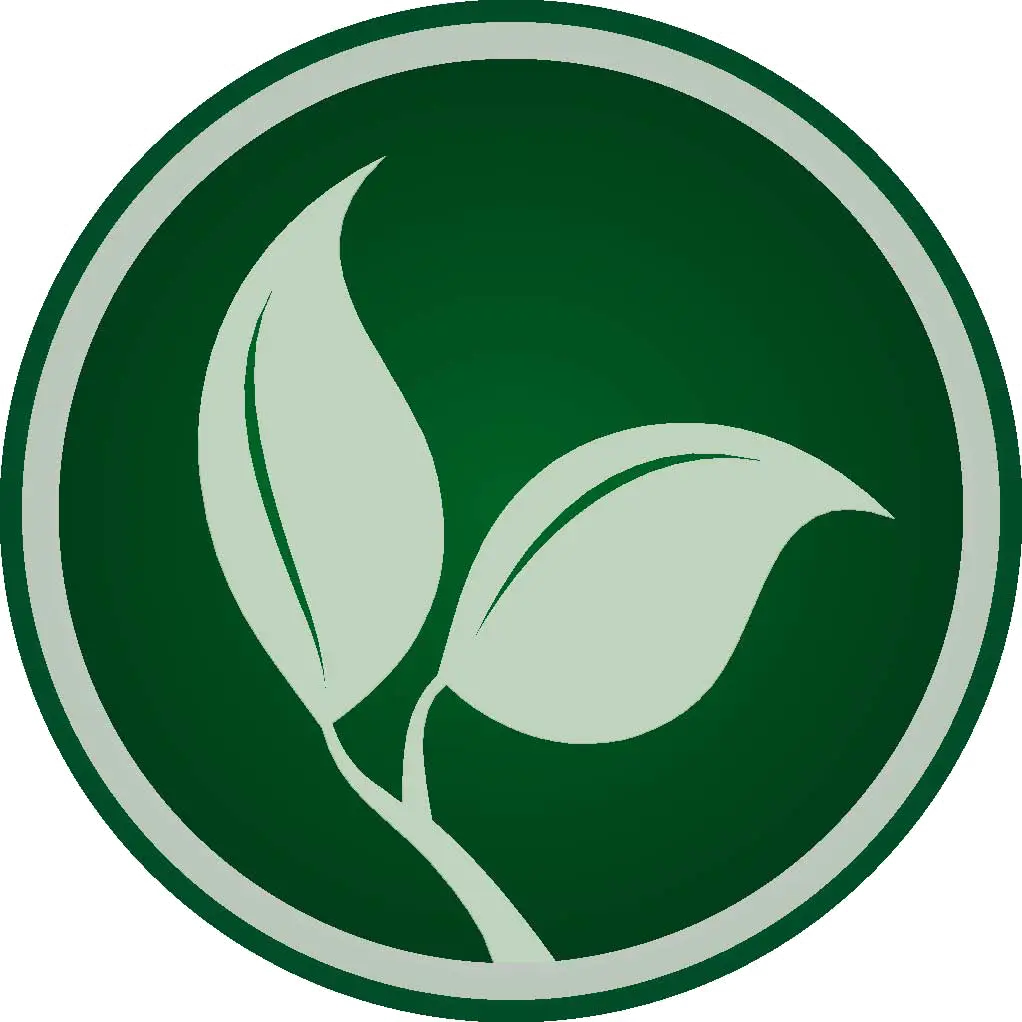I’m sure that by now most of you have read the Agriculture.com article about Georgia’s Alex Harrell setting a new record in 2023 for soybean yields with a yield of 206.8 bushels per acre. For those of you who have not, Mr. Harrell broke the previous record of 190 bu/A set by Randy Dowdy in 2019. Read the original article at https://www.agriculture.com/new-soybean-yield-record-set-at-206-bushels-7852613. What an awesome feat — congratulations to Alex and all involved!
I don’t know Mr. Harrell, or any of his team that helped him reach this milestone. All I know is what I gleaned from reading a few articles about the record. I’ve had the privilege of working with a number of PA yield champs through the years & have come to understand their view on yield contests. Most of them have similar personality characteristics that drive them – question everything, try new things, be forward thinking, and never see failure as a failure.
Setting yield records doesn’t happen by accident, and it doesn’t happen overnight. It takes focus, dedication, and patience. Farms that win yield contests and set yield records are 100% invested in the process & they set aside time to plan and discuss their next steps. Most of them have been gathering information for years and have a “product funnel” that narrows down variety, pesticide, nutritionals, and biologicals for use in their contest plot. Yes – good soil and/or irrigation help these farms set new yield records. Most of you reading this article don’t have irrigation and many of you question if your soils qualify as “good soil”. Don’t let these barriers discourage you from exploring what it takes, on your soil, to set new personal yield records. After all, before you can set state records or national records, you need to set your personal farm record.
You’ll need to know as much as you can about soybean growth and current soybean research to improve your soybean yields. https://coolbean.info/soybean-research/ is a great place to start. Most of the work is from the Upper Midwest part of the US, but the site is full of basic soybean knowledge and advanced research that is fundamental for your journey to soybean world domination. The articles on foliar fertilizer applications, sulfur needs, and fungicide applications are interesting to read
It may take a few years to get your field conditions & management practices “right” to approach record-setting yields. This may be the first time you’ve heard of Alex Harrell, but 2023 was certainly not the first year he planted a soybean yield plot. You can also be sure Mr. Harrell’s put a lot of work into his yield plot & he’s not sharing all his secrets (neither would you!). Based on the articles written about his record, here is a checklist of BMPs he used on his operation that you can compare to your own management practices.
How do Your Management Practices Measure Up?
| BMPs implemented in the yield plot | Soybean Yield Champ Alex Harrell | You |
| Cover Crop prior to soybeans | Rye, Triticale, radishes, oats | |
| Yield Mapping & Analysis to find the highest yielding location | X | |
| Annual 1-acre grid sampling in contest field | X | |
| VR Lime + base nutrition | X | |
| Strip Till w/ Banded Fertilizer | X | |
| Support Group for Exchanging Ideas & strategic on-farm testing | X | |
| Farm Tested Variety | Group IV indeterminate bean | |
| Farm Tested Population | 85,000 | |
| Farm Tested Row Spacing | 30” rows | |
| In-Season Tissue Analysis | Weekly | |
| In Season Fertilizer Applications based on Tissue Analysis | X | |
| Fungicide Applications | X | |
| Nutritional/Fungicide Seed Treatments | X | |
| Irrigation | X | |
| Harvest Aid (desiccant) | X |
What on this list are you missing? Be honest – what things have you truly farm tested & know, because your data tells you, are the best choice for your fields? The ability to build upon your site-specific knowledge is the key ingredient to improving yield & field performance. Let’s break this list into 2 categories – easy things to accomplish and hard things to accomplish
Easy Things:
- Use yield maps to identify your highest yielding field and/or your highest yielding acres – your “yield plot”. These are the acres that will set the personal yield record for you! A multi-year layered analysis is ideal for identifying the boundary of high-yielding zones. If yield data is not available, talk to your RtC agronomist about using multi-year layered NDVI imagery to identify the high yielding zone boundaries.
- Intensively grid sample your yield plot using 1-acre grids, then apply lime & fertilizer to raise the base fertility levels into the “high” range. 1-acre grids are great for intensively managed areas, but not appropriate for regular production fields where a 2-2.5 acre grid is better.
- Download & spend time reading Beck’s Practical Farm Research results. It’s a great resource for new ideas. https://www.beckshybrids.com/research/practical-farm-research.
- Upgrade your planter so it uniformly & precisely places seed at the proper depth. Upgrade deliver systems for at-planting materials.
- Identify local yield data for high-yielding varieties that perform well in your geography & plan on a simple variety plot to test 2-3 of these varieties.
- Plant sample your yield plot weekly, beginning just prior to the post-emergence herbicide application. You may not be looking to make weekly foliar applications, but you are looking to collect data on nutrient needs by growth stage for your particular field.
- Think about your soil health & cover crop options. What should you be doing to increase microbial populations, improve nutrient cycling? High yields won’t happen if the soil is working against you.
- Apply a foliar fungicide in the reproductive growth stages. Consider a nutritional tank mix partner for this application.
Hard things:
- Data Management. Analyzing yield data was on the easy list, so why is data management also on the hard list??? There is a lot of work needed to clean up yield data, combine it with other relevant layers, and create a useful analysis layer that has the right amount of contouring, smoothing and weighting. As with any Precision Ag thing – good data in = good data out. If we want to use this data as the base for intensive sampling or any kind of variable rate application, it needs to be precise.
- On-Farm Testing. Your Yield Plot is not the place for this! We’re talking about additional locations where you test products to see which ones make the grade for use in your yield plot. This is not simply taking trial results from your fertilizer dealer and replicating that in your yield plot. It’s also not the “more is better” philosophy & making multiple tank-mix applications to make yourself feel good for taking action. Rather, this is data driven decisions based on your weekly plant analysis and products you’d like to see tested.
Most farms doing on-farm testing will choose 2-4 products a year that either address a need they’ve discovered through testing or a product that they’ve studied elsewhere. Once a product is confirmed to increase yield after 2+ years of on-farm testing, they are moved into the yield plot. There are many hurdles to on-farm testing you’ll want to think about, including plot layout & planting + logistics of applying multiple products to small sized strips at exactly the right time during times of the year where you are quite busy.
As an example, an RtC agronomist tested a soybean field weekly in 2021 & confirmed Boron deficiencies throughout the growing season. In 2022, on-farm trials were set up to determine the rate of Boron necessary to overcome identified deficiencies & the timing of those applications. Talk with your agronomist about setting up some strip trials in fields this year to test products.
Thinking about Fertility for High Yielding Beans
What do the nutritional requirements look like for a 200 bu/A soybean yield? Here is nutrient uptake for a 100-bu/A yield and a 200-bu/A yield (sourced from International Plant Nutrition Institute IPNI). The elements are listed in order of total uptake.
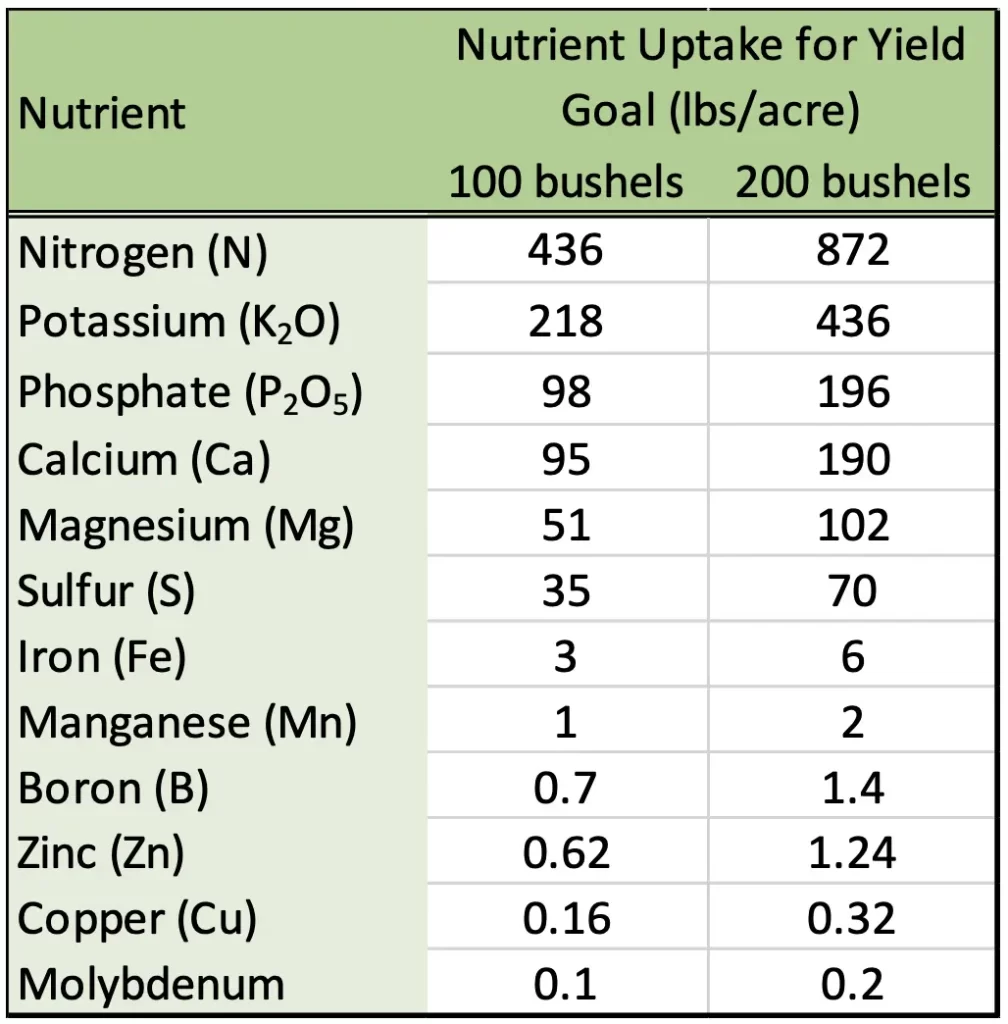
Let’s focus on 100-bushel soybeans for this conversation – it’s more attainable. 436 lbs of Nitrogen is a huge number! Think about your corn yielding 350 bu/A corn and you’re in the same uptake range. Next, think about soybeans showing negative yield response to added UAN or Urea during the growing season. So, where is this N coming from? Over ½ comes from nodulation, while the other ½ comes from soil sources like organic matter, manure residual and cover crop N. Increased crop residues, cover crops, and healthy microbial populations are important for these contributions to be present.
Potassium removal is another consideration. 218 lbs of K2O removal is 350 lbs potash. Recent research indicates that applying normal rates of potash (150-200 lbs/A) too close to planting can negatively impact nodulation (nitrogen production) and yield. If your yield plots, trial plots, or any other soybean field needs potash, the potash should be applied 40-60 days before planting to reduce the risk of chloride toxicity.
Sulfur is a 3rd nutrient to pay special attention to, as sulfur deficiencies have been increasing fast. Most farms do not have soil organic matter levels high enough to provide the full amount of sulfur needed by a crop. Organic Matter sulfur reacts much like organic matter nitrogen – OM is 5% sulfur & it mineralizes at 2-3% a year. Once mineralized, this sulfur is exposed to leaching loss and immobilization. Organic Matter levels might need to be 4% or more in order for the soil to provide enough sulfur without fertilizer supplements. As time goes by, sulfur applications of either Ammonium Sulfate (24% Sulfur), KMag (20% potassium + 20% Magnesium + 20% Sulfur), and even gypsum (Calcium + Sulfur) will become standard practice to meet nutrient needs.
Phosphorus deficiency is a foreign concept to most farms in southcentral PA. Move into the northern tier or western part of the state, or into New Jersey, and it is a different story. There has been a lot of research done regionally, by Growmark FS, to show the yield response to P fertilizer placement. For normal production fields, broadcast P is inefficient and expensive, while banded P is very efficient and saves $ through time. Think differently for your yield plot. It’s small acreage and your hobby – if you have low soil P you can spend the money to build soil phosphorus levels to 100 ppm Mehlich III extraction through manure & fertilizer applications.
Magnesium & Calcium – Magnesium may be the most frequent deficiencies/imbalances seen in corn plant sampling in our region over the past 10 years. Magnesium + Sulfur deficiencies are also easily spotted in wheat on farms where layer manure has been used for the majority of supplemental nutrients. Soybeans seem to react differently and most of our plant sampling through the years indicate beans are able to find enough Magnesium. However, if your other crops are showing Magnesium deficiency, use Mag Lime or KMag fertilizer to provide additional magnesium to the system. Likewise, if calcium is low, consider a gypsum application.
Iron, Zinc, Boron, Manganese, Copper, Molybdenum This is where plant sampling is important. While soil tests can tell you what is present in the soil, the extraction methods that are really good at measuring phosphorus and potassium were probably not developed with micronutrient extraction in mind. Plant samples tell you what the plant can access & take in from the soil & is a much more accurate method for determining micronutrient needs. In the sampling we’ve done over the years, we’ve identified farms where each of these nutrients, or a combination, are limiting.
Other Management Practices for Year 1
Fertility is only 1 aspect of high yields. Addressing baseline fertility is an “easy” step and usually one farms can start focusing on in year 1. There are a few other things you can do on year 1
Late Season Management – apply fungicide + nutritional at the R3 growth stage
Variety Testing – start slow; pick 2-3 varieties to place in a field in a strip trial that you can take to yield.
Planter Maintenance – you should be doing this anyway, but make sure the planter is working above 95% singulation for the speed to intend to plant. Reaching new personal yield goals is a process. You will have large investments of time and resources to make it happen. There will be setbacks & failures that are beyond your control, mistakes that are totally your fault, and many weird things you can’t answer. But, you will find things that improve overall farm profitability, it will keep you engaged in learning, and you’ll have fun doing it!
